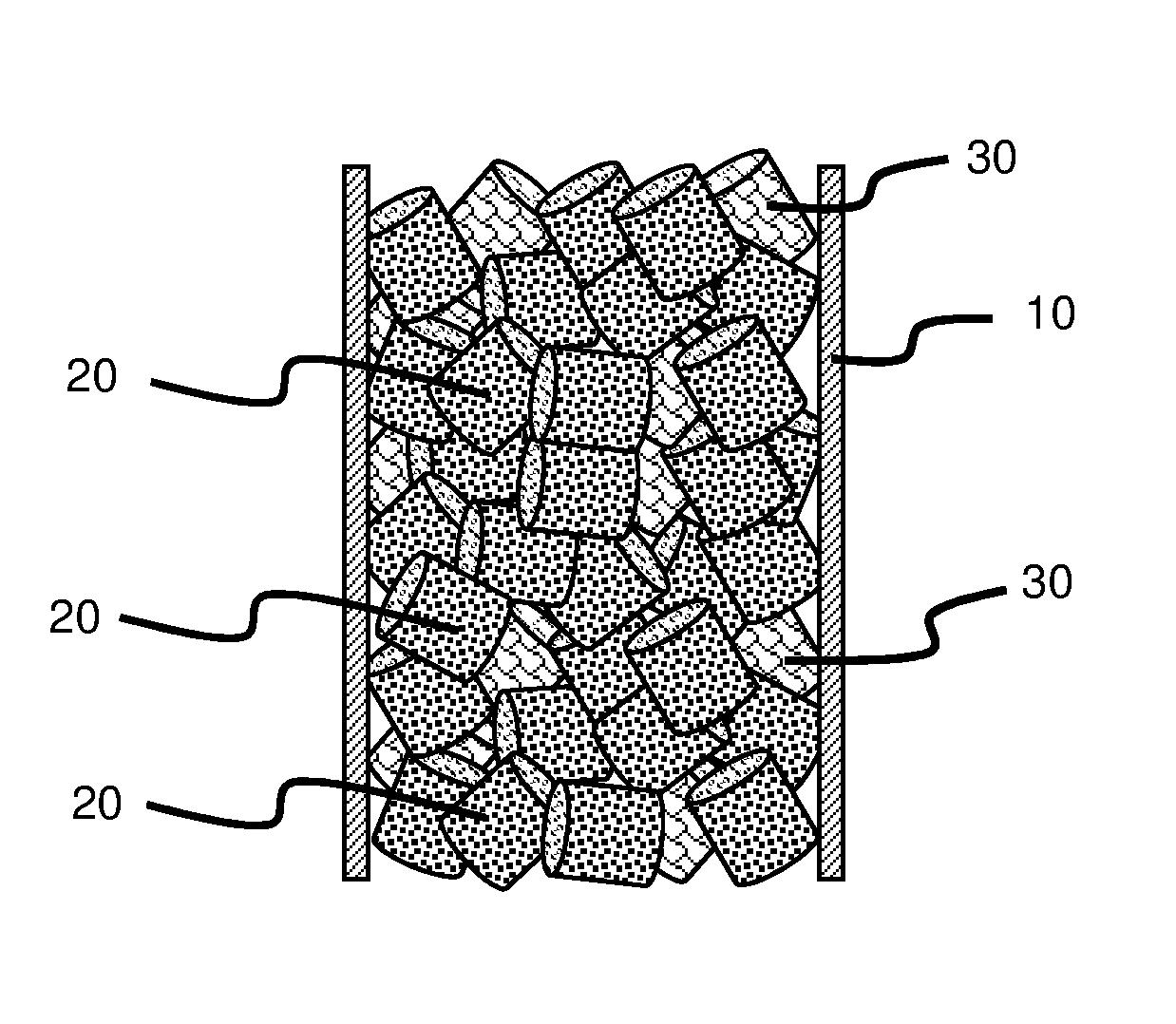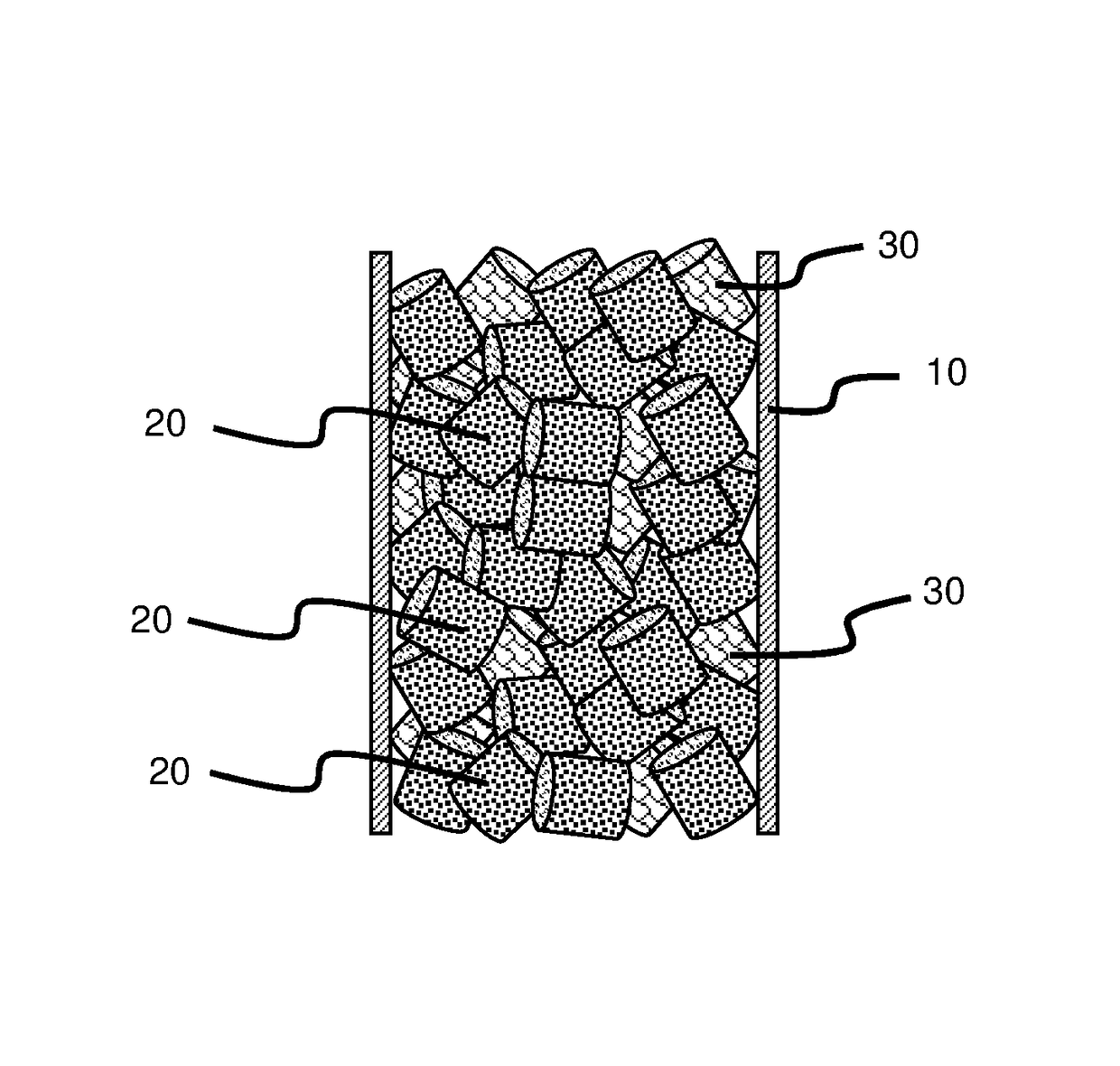Steam-Hydrocarbon Reforming Reactor
a technology of steam hydrogen and reactor, which is applied in the direction of physical/chemical process catalysts, bulk chemical production, metal/metal-oxide/metal-hydroxide catalysts, etc., can solve the problems of reformer tube failure, hot spot formation on the reformer tube wall, and increase the diameter of the reformer tub
- Summary
- Abstract
- Description
- Claims
- Application Information
AI Technical Summary
Benefits of technology
Problems solved by technology
Method used
Image
Examples
example
[0071]A packed bed comprising commercial catalyst support pellets made from α-alumina was tested in the Instron system. From the data a Young's modulus for the packed bed was determined to be about 0.01 GPa. The critical compaction pressure was determined to be about 0.4 MPa. This means that some of the pellets will start to break when the engineering strain is about 0.04.
[0072]When metal foam pellets having the same size and same shape as the commercial catalyst support pellets are added to the packed bed, the Young's Modulus for the packed bed is reduced, for example, to 0.006 GPa. Since the Young's Modulus is reduced and the critical compaction pressure for the catalyst support pellets is the same (0.4 MPa), the packed bed with the metal foam pellets requires a greater engineering strain to reach the critical compaction pressure (i.e. about 0.065 for a Young's Modulus of 0.006 GPa).
PUM
| Property | Measurement | Unit |
|---|---|---|
| weight % | aaaaa | aaaaa |
| porosity | aaaaa | aaaaa |
| porosity | aaaaa | aaaaa |
Abstract
Description
Claims
Application Information
 Login to View More
Login to View More - R&D
- Intellectual Property
- Life Sciences
- Materials
- Tech Scout
- Unparalleled Data Quality
- Higher Quality Content
- 60% Fewer Hallucinations
Browse by: Latest US Patents, China's latest patents, Technical Efficacy Thesaurus, Application Domain, Technology Topic, Popular Technical Reports.
© 2025 PatSnap. All rights reserved.Legal|Privacy policy|Modern Slavery Act Transparency Statement|Sitemap|About US| Contact US: help@patsnap.com



